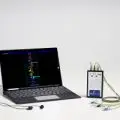
The Wechsler Intelligence Scale for Children – Fifth Edition, Australian Standard (WISC-V) is an individually administered and comprehensive clinical instrument used to assess the general thinking and reasoning skills of children aged six to 16 years.
Test results include a Full-Scale Intelligence Quotient (IQ) score, age-equivalent rankings, and scores for Verbal Comprehension, Visual-Spatial, Fluid Reasoning, Working Memory and Processing Speed composites.
The WISC-V can be used to identify an intellectual disability, giftedness, specific learning disabilities, placement in specialised programs and clinical intervention. The assessment usually requires between 1.5 – 2 hours and is administered using iPads.
Our assessment scores are analysed and reported by experienced clinicians.
Skills assessed with WISC-V
The WISC-V psychometric test has been recently updated (2016) to incorporate 75 years of research and advances in the field of intellectual assessment, as well as to reflect the practical and clinical needs of contemporary society.
The WISC-V has 10 primary subtests and supplementary subtests:
- Similarities and Vocabulary are the two primary subtests that comprise the Verbal Comprehension score.
- The two primary Visual-Spatial subtests are Block Design and Visual Puzzles.
- Fluid Reasoning is measured with the two primary subtests, Matrix Reasoning and Figure Weights.
- Digit Span and Picture Span are the two primary Working Memory subtests and Coding and Symbol Search are the two primary Processing Speed subtests.
The 10 primary subtests, however, do not contribute equally to the Full-Scale Intelligence Quotient or IQ score. The Full-Scale IQ is comprised of seven primary subtests’
- Similarities
- Vocabulary
- Block Design,
- Matrix Reasoning
- Figure Weights
- Digit Span and Coding.
More About the WISC-V Measures
- The Verbal Comprehension Index measures a child’s ability to access and apply acquired word knowledge. Specifically, this score reflects one’s ability to verbalise meaningful concepts, think about verbal information and express oneself using words.
- The Visual-Spatial Index measures a child’s ability to evaluate visual details and understand visual-spatial relationships to construct geometric designs from a model. This skill requires visual-spatial reasoning, integration and synthesis of part-whole relationships, attentiveness to visual detail, sometimes using hand-eye coordination, and working quickly and efficiently with visual information.
- The Fluid Reasoning Index measures a child’s ability to detect the underlying conceptual relationship among visual objects and use reasoning to identify and apply rules. Identifying and applying conceptual relationships requires inductive and quantitative reasoning, broad visual intelligence, simultaneous processing and abstract thinking.
- The Working Memory Index measures a child’s ability to register, maintain and manipulate visual and auditory information in conscious awareness. These tasks measure one’s skills in attention, concentration and mental reasoning, as well as visual and auditory discrimination. This skill is closely related to learning and achievement.
- The Processing Speed Index measures a child’s speed and accuracy of visual identification, decision-making and decision implementation. Performance is related to visual scanning, visual discrimination, short-term visual memory, visuomotor coordination and concentration. This skill may be important to a child’s development in reading and the ability to think quickly in general.
The Full-Scale IQ score is derived from seven subtests. It summarises ability across the five areas of cognitive ability: Verbal Comprehension, Visual-Spatial, Fluid Reasoning, Working Memory and Processing Speed indexes. The WISC–V Full-Scale score is one way to view a child’s general intellectual functioning.

Frequently Asked Questions
An IQ test should only be done if it will benefit the child by improving his/her educational program. IQ tests should not be done if a child is too young (under 6) and/or the scores would not be reliable based on the child’s disability.
The WISC — the Wechsler Intelligence Scale for Children — is a tool for assessing a child’s academic progress and potential.
The test itself takes between 90 and 120 minutes to perform.
It produces a Full Scale IQ that represents your child’s general intellectual ability.
The results then help to identify the issues that affect your child’s ability to learn and to recommend the best early intervention methods going forward.
More importantly, a learning disorder or difficulty can be identified, and the best course of action can be taken to address it.
The WISC-V is considered the “gold standard” intelligence test for children ages 6 through 16. As such it is an important component of every psycho-educational evaluation.
The Full-Scale IQ score is derived from seven subtests and summarises ability across the five areas of cognitive ability: Verbal Comprehension, Visual-Spatial, Fluid Reasoning, Working Memory and Processing Speed indexes.
The WISC-IV is helpful in analyzing differences in cognitive ability for ADHD in addition to a careful clinical examination.
| Composite Score Range | Traditional Description | WISC-V Classification |
| 130 and above | Very Superior | Extremely High |
| 120 – 129 | Superior | Very High |
| 110 – 119 | High Average | High Average |
| 90 – 109 | Average | Average |
| 80-89 | Low Average | Low Average |
| 70 – 79 | Borderline | Very Low |
| 69 and below | Extremely Low | Extremely Low |
Wechsler Intelligence Scale for Children (WISC) is widely used to estimate autistic intelligence (Joseph in The neuropsychology of autism. Oxford University Press, Oxford, 2011; Goldstein et al. in Assessment of autism spectrum disorders).
3 Tips to Make WISC-V Preperation Fun
Read to your child daily and let your child see you reading for pleasure at home.
Encourage gameplay, whether it’s on the playground, playing board games or even video games.
Ask your child plenty of open-ended questions.
Wechsler Intelligence Scale for Children-Third Edition may provide some useful information about the presence of specific cognitive disabilities in developmental dyslexia.
A popular misconception is that all children with attention deficit hyperactivity disorder (ADHD) are naturally smarter and have a higher IQ than children without ADHD. However, there is no correlation between this condition and intelligence.
| Age of Child | Average IQ |
|---|---|
| 5 years old | Between 5 and 20 |
| 6 years old | Between 5 and 20 |
| 7 years old | Between 10 and 30 |
| 8 years old | Between 10 and 30 |
| Age of Child | Average IQ |
|---|---|
| 5 years old | Between 5 and 20 |
| 6 years old | Between 5 and 20 |
| 7 years old | Between 10 and 30 |
| 8 years old | Between 10 and 30 |
TONI (Test of Nonverbal Intelligence), perhaps the most popular IQ test for ASD, is a unidimensional test, as are the Naglieri Nonverbal Intelligence Index and Raven’s Progressive Matrices tests. These tests, however, remain the best way to measure IQ in ASD patients.
Intellectual disability is defined within the American Psychiatric Association’s Diagnostic and Statistical Manual of Mental Disorders, fourth edition, Text Revision (DSM-IV), as a standard score of approximately 70 on an individually administered measure of cognitive ability and ‘concurrent deficits or impairments in adaptive functioning.’
– American Psychiatric Association. Diagnostic and Statistical Manual of Mental Disorders Text Revision, 4th edn. Washington, DC: American Psychiatric Association, 2000
‘High functioning autism’ is a term often used for individuals diagnosed with ASD who have an intelligence quotient (IQ) estimate of 70 or above. However this must be assessed in conjection with clinical ASD diagnosis.
It is a trusted cognitive ability measure.
The WISC–V gives you flexibility and interpretive power, along with access to more subtests, so you get a broader view of a child’s cognitive abilities.
An individual’s IQ does not change with age. In other words: if you did an IQ test now and then another one in 10 years’ time, your IQ score will probably be very similar. This is because IQ is always measured relative to other people your age.
The Wechsler Intelligence Scale for Children (WISC) is an individually administered intelligence test for children between the ages of 6 and 16. The Fifth Edition (WISC-V; Wechsler, 2014) is the most recent version.
For the WISC-V, the publisher proposed a five factor higher-order theoretical structure (e.g., Gc, Gf, Gv, Gwm, & Gs) linked to CHC theory. This linkage to a theory of cognitive ability is laudable; however, the accuracy of its linkage with theory may be readily tested via factor analysis.
– Dombrowski, S. C., McGill, R. J., Watkins, M. W., Canivez, G. L., Pritchard, A. E., & Jacobson,
L. A. (in press). Will the real theoretical structure of the WISC-V please stand up? Implications
for clinical interpretation. Contemporary School Psychology. Advance online publication.
https://www.doi.org/10.1007/s40688-021-00365-6
A gifted child’s IQ will fall within these ranges: Mildly gifted: 115 to 130. Moderately gifted: 130 to 145. Highly gifted: 145 to 160. Profoundly gifted: 160 or higher.
High-average (111-124): If your child scores in the high average range, they are likely to have strong academic skills. These students are often the highest achieving of all. Children of high average intelligence have the advantage that most topics come fairly easy to them.
Length and Structure: The WISC-IV is designed assess individual children and adolescents. The ten core subtests take approximately 65-80 minutes to administer, and an additional 10-15 minutes are required to administer the five supplemental subtests.
Correlations between WISC -V full scale IQ and WIAT- III composite scores ranged from 0.58 to 0.81. WISC -V primary indexes were related to the WIAT- III composites (e.g., WISC -V VCI and WIAT- III Oral Language), with correlations ranging from 0.19 to 0.78, and most correlations in the low to moderate range.
– Raiford, S. E. (2017). Essentials of WISC-V Integrated Assessment. Hoboken, NJ: Wiley
The tests are designed to capture current cognitive abilities. Applicants may only take the Wechsler Scales once in 12 months. If the results are more than 2 years old, or have been provided for two admissions cycles, the applicant will need to take the evaluation again.
Early twin studies of adult individuals have found a heritability of IQ between 57% and 73%, with some recent studies showing heritability for IQ as high as 80%. IQ goes from being weakly correlated with genetics for children, to being strongly correlated with genetics for late teens and adults.
– Bouchard, Thomas J.; McGue, Matt (January 2003). “Genetic and environmental influences on human psychological differences”. Journal of Neurobiology. 54 (1): 4–45. doi:10.1002/neu.10160. PMID 12486697 Bouchard, Thomas J. (7 August 2013). “The Wilson Effect: The Increase in Heritability of IQ With Age”. Twin Research and Human Genetics. 16 (5): 923–930. doi:10.1017/thg.2013.54. PMID 23919982. S2CID 13747480.
But in fact, autism and ADHD often coincide. An estimated 30 to 80 percent of children with autism also meet the criteria for ADHD and, conversely, 20 to 50 percent of children with ADHD for autism.
– Rusting, R., 2018,Decoding the overlap between autism and ADHD, available on https://doi.org/10.53053/KCZY8213
- sit up, crawl, or walk later than other children.
- learn to talk later, or have trouble speaking.
- find it hard to remember things.
- have trouble understanding social rules.
- have trouble seeing the results of their actions.
- have trouble solving problems.
The WISC-V can be used for purposes of identifying an intellectual disability, giftedness, specific learning disabilities, placement in specialised programs and clinical intervention. The assessment usually requires between 1.5 – 2 hours and is administered using iPads.
The WISC-V generates five composite scores including Verbal Comprehension (VCI), Visual Spatial Index (VSI), Fluid Reasoning Index (FRI), Working Memory Index (WMI), and Processing Speed Index (PSI).
Signs of Giftedness in Children:
- an ability to rapidily learn and process complex information
- a need to explore subjects in depth or extensively
- an insatiable curiosity, as demonstrated by endless questions and inquiries
- ability to understand or comprehend material several grade levels above their peer group
Empirical evidence suggests that especially parental education, parental income, and maternal IQ are important predictors of intelligence. Parental education together with maternal IQ and the child’s sex were found to account for 24% of the variance in IQ at age 5
– Eriksen HLF, Kesmodel US, Underbjerg M, Kilburn TR, Bertrand J et al. Predictors of Intelligence at the Age of 5: Family, Pregnancy and Birth Characteristics, Postnatal Influences, and Postnatal Growth. Plos One. 2013; 8: 11.
A learning disability makes it difficult to acquire specific skills such as reading skills or math skills. By contrast, ADHD impacts more global skills and executive functions like the ability to focus, the ability to control emotions, and the ability to control impulsive behaviour.
There are three major criteria for intellectual disability: significant limitations in intellectual functioning, significant limitations in adaptive behavior, and onset before the age of 18.
A popular misconception is that all children with attention deficit hyperactivity disorder (ADHD) are naturally smarter and have a higher IQ than children without ADHD. However, there is no correlation between this condition and intelligence.
An IQ test can identify if there are any intellectual concerns – the cognitive/IQ testing for kids will rule out any learning disabilities.
IQ tests, such as the WISC for children aged 6 to 16, can identify and diagnose learning disabilities and disorders.
Early intervention is essential, and if an intellectual concern is present the clinician administrating the test can identify what areas are the weakest, and recommend intervention measures to address it and support your child.
Fees
This service is currently provided by Psychology Team, registered with the Psychology Board of Australia. Rebates are not available for this service. Fees for the provision of this service are as follows:
Initial Consultation – $250
– 50 min initial appointment
– Verbal Feedback & goal setting
– Assessment Planning
Cognitive Assessment – $1440
– 2hr cognitive assessment
– Review of standardised questionnaires, school interviews
– 2hr scoring, interpretation and report writing
– 1hr Feedback session
Additional Report Writing Time – $250 per hour
I need to speak with someone about my child's needs. How do I get started?
Simply fill out the online inquiry form on this page, and one of our Clinicians will contact you within 24 hours to help you with your inquiry.
How do I pay for my Session?
Payment is required at the end of your Session. Your Clinician will process this for you.
We look forward to hearing from you!
We recognise the unique qualities of all our clients and will work closely with you to personalise your support so that you can achieve your goals of optimal mental processes.
We are ready to help clients work through their challenges. We look forward to helping you live a much richer, happier, healthier life.








